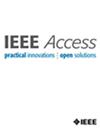Automatic Endoscopic Navigation for Monocular Depth and Ego-Motion Estimation in Wireless Capsule Endoscopy Through Transformer Network
IF 3.4
3区 计算机科学
Q2 COMPUTER SCIENCE, INFORMATION SYSTEMS
引用次数: 0
Abstract
Gastrointestinal (GI) cancers are among the most prevalent globally. Wireless capsule endoscopy (WCE), a minimally invasive technology, offers a promising alternative for diagnosing and treating GI diseases. Accurate depth estimation from WCE but remains challenging due to the complexity of the GI environment and limited datasets. In this paper, we propose an automatic endoscopic navigation system for monocular depth and ego-motion estimation in wireless capsule endoscopy (WCE) through a Transformer-based encoder-decoder network. Minimally invasive surgeries, including gastrointestinal (GI) procedures, face unique challenges such as restricted field of view, illumination variation, and texture sparsity, which complicate depth estimation and pose estimation tasks. Traditional Structure from Motion (SfM) and SLAM methods are often inadequate for GI scenes due to these inherent complexities. To address these issues, we introduce a novel self-supervised neural network framework that integrates a dual-attention mechanism within a modified ResNet. This model simultaneously predicts depth maps and ego-motion from monocular GI images, without requiring ground truth depth data. Our approach enhances feature extraction through spatial and channel-wise attention, allowing the network to capture both local and global contextual information. Furthermore, a multi-scale structural similarity index combined with L1 loss function is employed to improve the accuracy of depth estimation in challenging endoscopic environments. The model leverages a multi-interval frame sampling strategy to simulate diverse ego-motion scenarios, making it robust to low frame rate inputs typically seen in WCE. For ego-motion estimation on the ColonSim dataset, our model achieves an Absolute Trajectory Error (ATE) of 0.09 m at 30 FPS, outperforming the next-best model, SC-SfMLearner, by 44.4%. Additionally, for depth estimation, our model records an Absolute Relative Error (Abs Rel) of 0.33, a Squared Relative Error (Sq Rel) of 0.27, and a Root Mean Square Error (RMSE) of 0.94 on the EndoSLAM dataset.基于变压器网络的无线胶囊内窥镜单眼深度自动导航及自我运动估计
胃肠道(GI)癌症是全球最普遍的癌症之一。无线胶囊内窥镜(WCE)是一种微创技术,为诊断和治疗胃肠道疾病提供了一种很有前途的选择。从WCE中准确估计深度,但由于GI环境的复杂性和有限的数据集,仍然具有挑战性。本文提出了一种基于变压器的编码器-解码器网络,用于无线胶囊内窥镜(WCE)的单眼深度和自我运动估计的自动内窥镜导航系统。包括胃肠道(GI)手术在内的微创手术面临着独特的挑战,如受限的视野、光照变化和纹理稀疏,这使得深度估计和姿态估计任务复杂化。由于这些固有的复杂性,传统的运动结构(SfM)和SLAM方法通常不适用于GI场景。为了解决这些问题,我们引入了一种新的自监督神经网络框架,该框架在改进的ResNet中集成了双注意机制。该模型可以同时预测单眼GI图像的深度图和自我运动,而不需要地面真实深度数据。我们的方法通过空间和通道的注意力增强了特征提取,允许网络捕获本地和全局上下文信息。此外,采用结合L1损失函数的多尺度结构相似度指数来提高具有挑战性的内镜环境下深度估计的精度。该模型利用多间隔帧采样策略来模拟各种自我运动场景,使其对WCE中常见的低帧率输入具有鲁棒性。对于ColonSim数据集上的自我运动估计,我们的模型在30 FPS下实现了0.09 m的绝对轨迹误差(ATE),比次优模型SC-SfMLearner高出44.4%。此外,对于深度估计,我们的模型在EndoSLAM数据集上记录的绝对相对误差(Abs Rel)为0.33,平方相对误差(Sq Rel)为0.27,均方根误差(RMSE)为0.94。
本文章由计算机程序翻译,如有差异,请以英文原文为准。
求助全文
约1分钟内获得全文
求助全文
来源期刊

IEEE Access
COMPUTER SCIENCE, INFORMATION SYSTEMSENGIN-ENGINEERING, ELECTRICAL & ELECTRONIC
CiteScore
9.80
自引率
7.70%
发文量
6673
审稿时长
6 weeks
期刊介绍:
IEEE Access® is a multidisciplinary, open access (OA), applications-oriented, all-electronic archival journal that continuously presents the results of original research or development across all of IEEE''s fields of interest.
IEEE Access will publish articles that are of high interest to readers, original, technically correct, and clearly presented. Supported by author publication charges (APC), its hallmarks are a rapid peer review and publication process with open access to all readers. Unlike IEEE''s traditional Transactions or Journals, reviews are "binary", in that reviewers will either Accept or Reject an article in the form it is submitted in order to achieve rapid turnaround. Especially encouraged are submissions on:
Multidisciplinary topics, or applications-oriented articles and negative results that do not fit within the scope of IEEE''s traditional journals.
Practical articles discussing new experiments or measurement techniques, interesting solutions to engineering.
Development of new or improved fabrication or manufacturing techniques.
Reviews or survey articles of new or evolving fields oriented to assist others in understanding the new area.
 求助内容:
求助内容: 应助结果提醒方式:
应助结果提醒方式:


